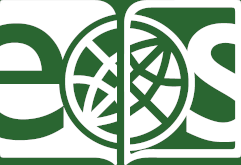The present work was accomplished at the Max Planck Institute for the History of Science in Berlin, in Department 1, and in the frame of the project “Long-Term Development of Knowledge.” The project aims to investigate the relations between practical and theoretical knowledge, in this case, mechanical knowledge. An abridged version of some of the sections of the present introductory text to the edition of Nicolò Tartaglia’s Nova scientia was first published in Italian in La scienza delle armi. Luigi Fernando Marsili. 1658–1730 (2012, 93–108). In the first stages of this work, issues related to content were discussed with Massimiliano Badino and Vincenzo de Risi, while Juliet Cappetta assisted the author in surmounting the first difficulties concerning the rendering in English.
Acknowledgments then go to Paolo Galluzzi, director of the Museo Galileo, and the staff of its library, for placing the 1550 edition at the author’s disposal in order to proceed with its comparison to the 1558 print run considered here. In Florence, special thanks are due to Giorgio Strano, curator of the Museo Galileo, whose invaluable advice helped the author investigate the surveying instruments discussed in the third book of Tartaglia’s Nova scientia and their history.
The head of the library of the Max Planck Institute for the History of Science, Urs Schoepflin, and his staff provided decisive support for this work, first by providing exceptional scans of the original historical source and then a rough transcription of the text by means of the workflow developed in the frame of the ECHO project (http://echo.mpiwg-berlin.mpg.de). The images throughout the entire work are published by courtesy of the Library of the Max Planck Institute for the History of Science. Kai Surendorf programmed the layout which allows the transcription and translation to be presented in parallel and supported the entire project from the IT perspective. Special thanks go to Sabine Bertram for her critical support in archival research.
The comparison between the 1537, 1550 and 1558 editions and print runs was accomplished thanks to the fundamental support of Viola E. Schmidt, Anna Siebold and Irene Colantoni. The latter fundamentally helped also in the last phase of production of the transcription. Paul Stefan Trzeciok gave support to the research while “decoding” non-standard Latinisms. Gunthild Storeck helped while resolving arithmetic calculations to check Tartaglia’s results. Beatrice Hermann fundamentally contributed to the final layout of transcription and translation.
The translation was produced together with Lindy Divarci and Anna Siebold. At the same time, however, they also provided major support for the research concerning the historical positioning of Tartaglia’s Nova scientia. During this research the discussions held with Jürgen Renn were of fundamental importance to obtain the results described in this work.
